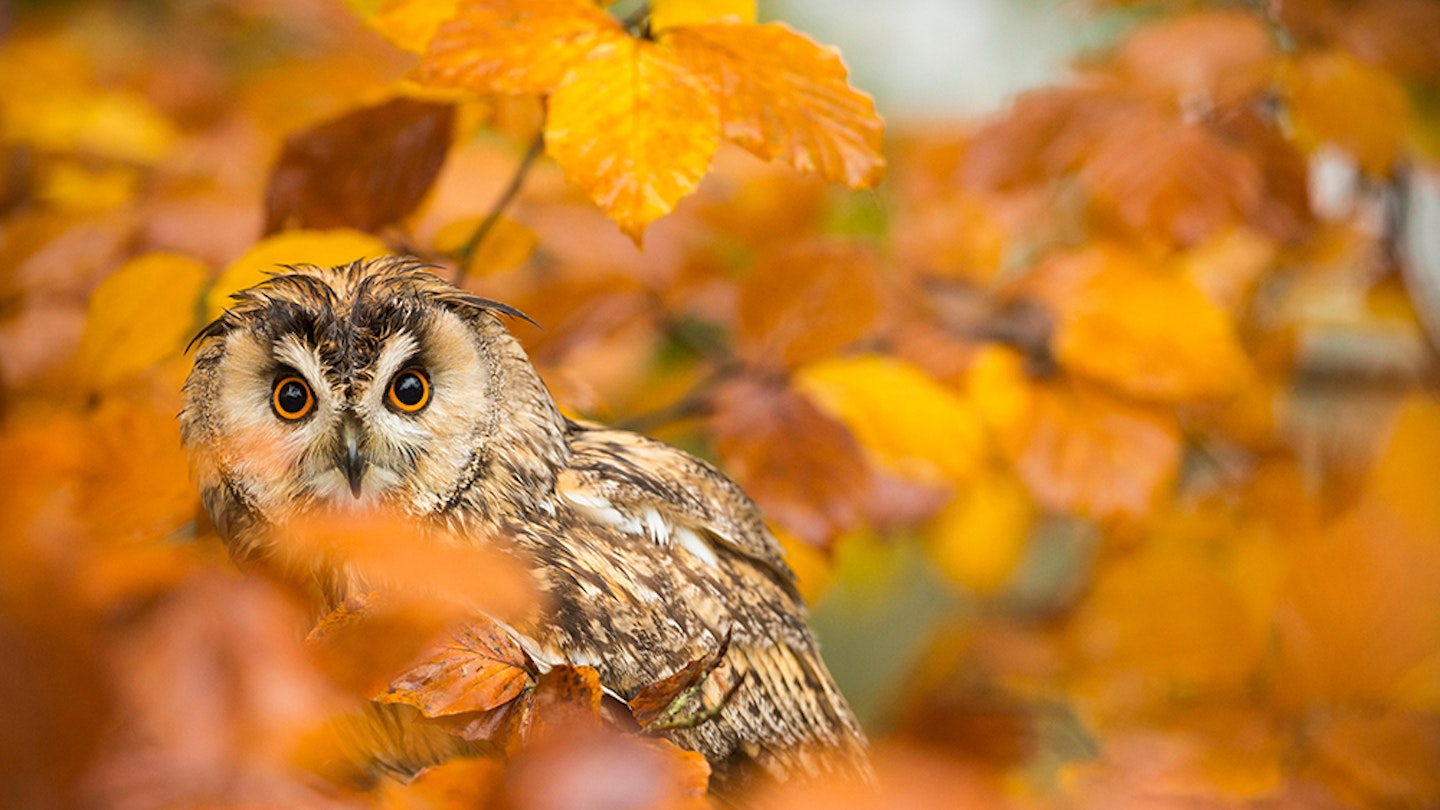Long-eared Owl
Though a widespread bird, found across most of the UK and even in Ireland (unlike the Tawny Owl), the Long-eared Owl is a secretive and largely nocturnal bird, so is relatively rarely encountered. This contrasts particularly with its closest relative the Short-eared Owl, which often flies about in broad daylight. But they are out there, if you know where to look. Up to 6,000 pairs of Long-eared Owls may breed each year in the country. From autumn through to spring, though the best way to see them is at a known roost site (where they can be watched sleeping and occasionally opening an eye by day). Known roost sites are generally either well-kept secrets (for fear of disturbance) or just poorly known, these days. Perhaps the most notable exception is at Deeping Lakes LWT, south Lincolnshire, which has become a popular place to watch up to five or so of the owls undisturbed on a wooded island, in recent years. This is not a huge roost, but it is better than nothing!
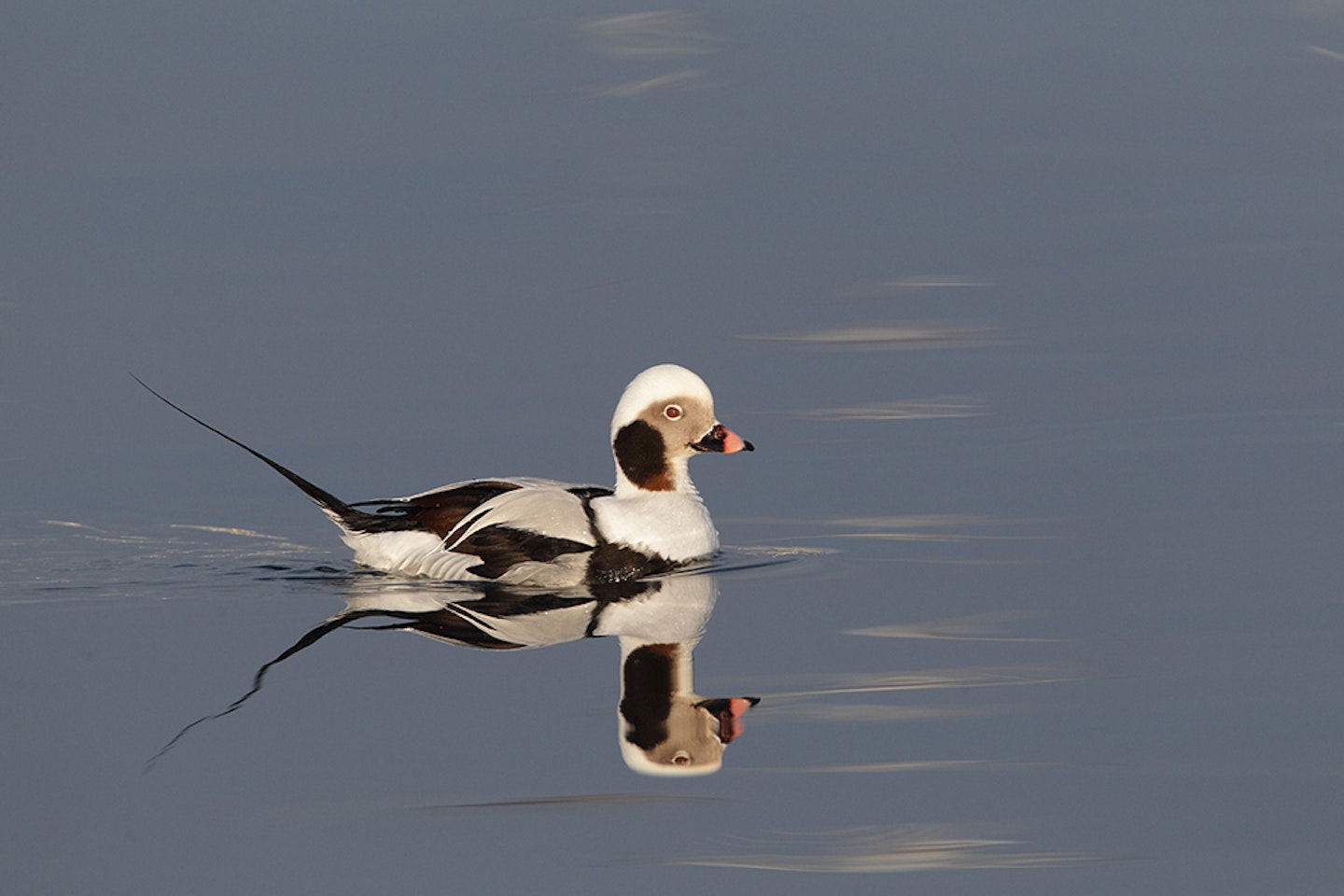
Long-tailed Duck
We know the little Long-tailed Duck as a sea-duck in winter, when the male’s predominantly white plumage is arguably more handsome than its breeding finery. These drakes retain the absurdly long tail throughout the year, which makes the Pintail’s fine plumes look positively moderate. Long-tailed Ducks are easiest to see off Scottish coasts, particularly in the north of the mainland or from the Northern Isles. They do occur in smaller numbers around much of the UK coast, and occasionally birds will turn up inland. Females are less exciting on the eye than males, lacking the extensive white in the plumage, and the long tail.
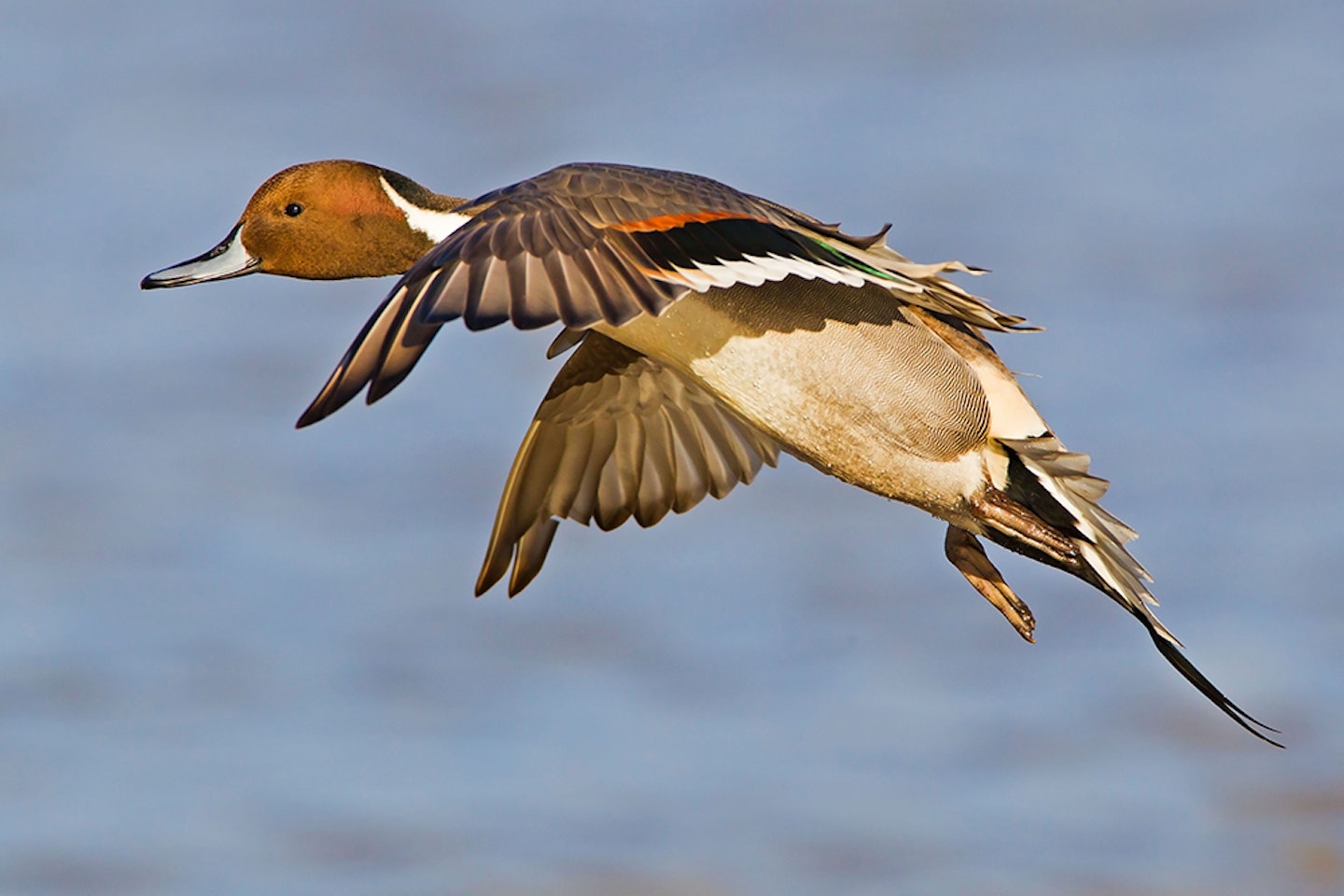
Pintail
The drake Long-tailed Duck is small and pretty with a very long tail, but the drake Pintail can claim to be our most graceful and elegant duck. It is long-necked and slim of build, with a delightful pattern of deep chocolate brown head, contrasting with a white neck and breast, grey body and yellow and black tail end. It is not the most colourful of dabbling ducks, but it is always a treat to see these birds. Nearly 30,000 spend the winter in the mild winters of the UK. They are wintering birds of sheltered coasts, estuaries and inland wetlands. Some areas of East Anglia (e.g. the Ouse and Nene Washes, Cambridgeshire), and the estuaries of the Dee and the Solway are among the best places to enjoy good numbers of Pintail.
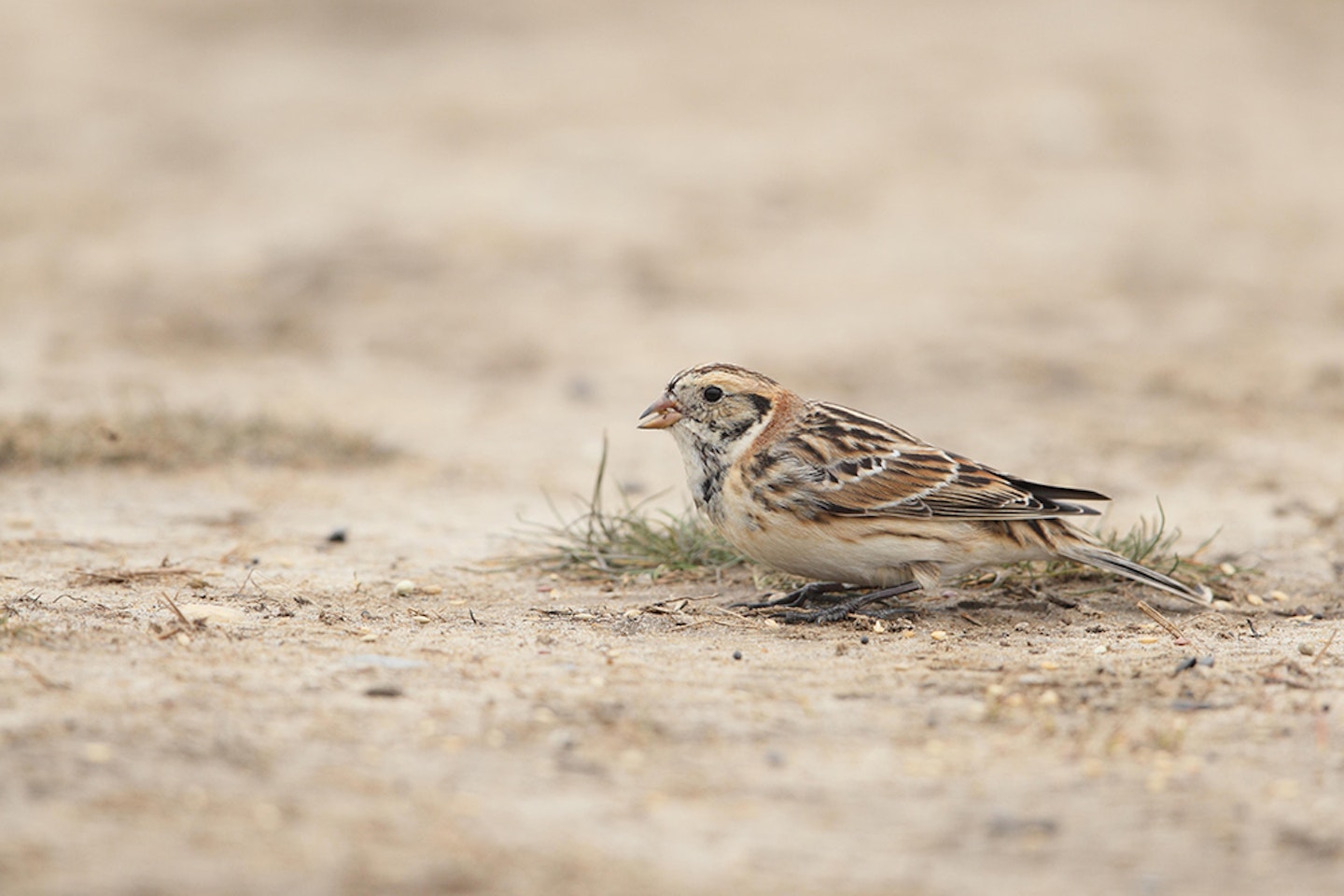
Lapland Bunting
Our North American friends call this big bunting the Lapland Longspur, as it has long rear claws to match its feeding habit of shuffling around on the ground. They are pretty scarce birds in the UK, with only about 700 individuals seen each winter (from October onwards). They are mainly found along the east coast, shuffling around stubble fields, saltmarshes and shingle banks in search of seeds. Lapland Buntings are handsome birds (even better in summer), looking somewhat like big, dumpy Reed Buntings, with an ‘open face’.
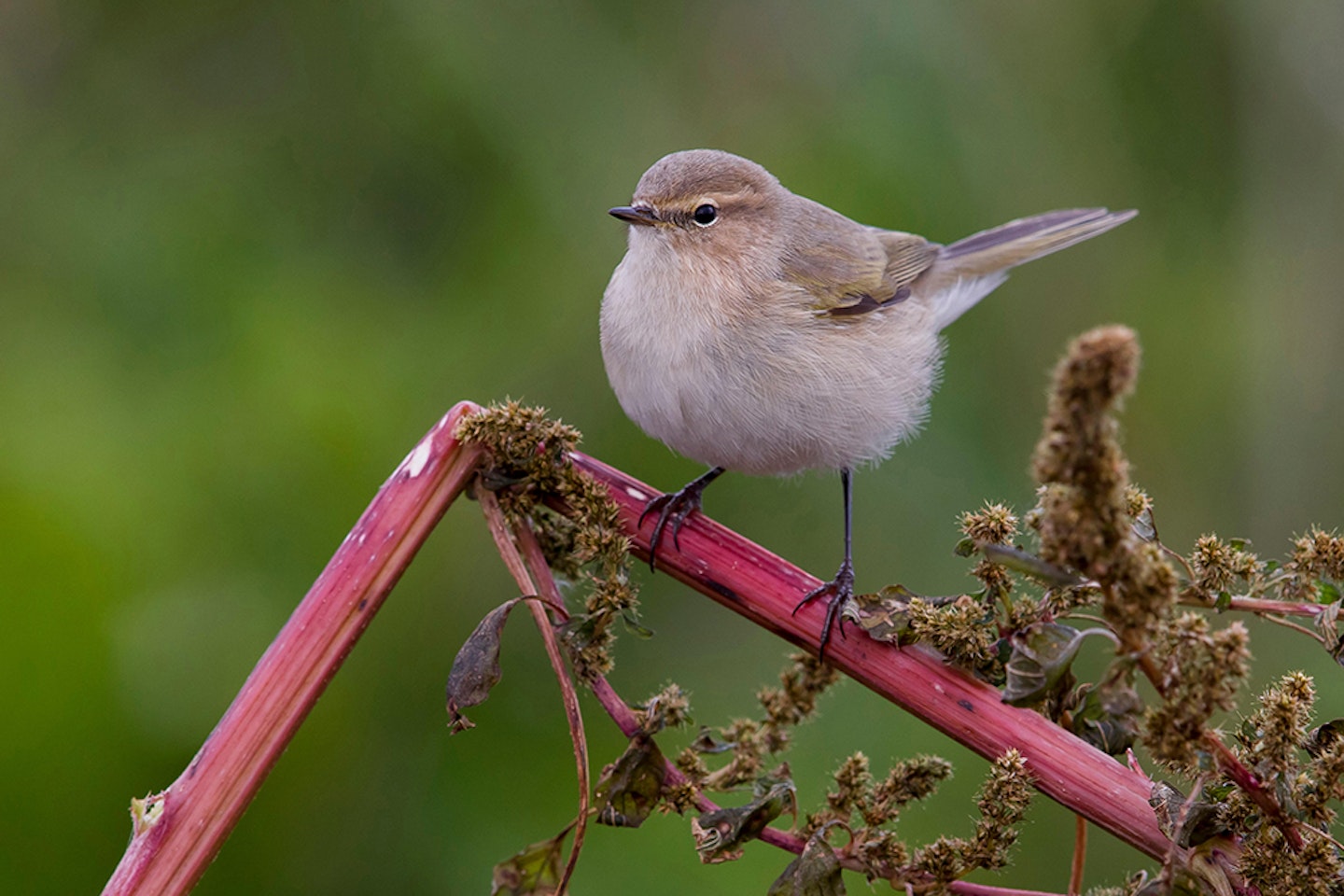
Siberian Chiffchaff
A small number of Siberian Chiffchaffs are found each winter across the country. Currently considered a subspecies of (Common) Chiffchaff, they are quite distinctive in the field, and who knows, perhaps one day they will be ‘split’ as a full species. In common with other Chiffchaffs, these wintering individuals favour the warm microclimates of sites such as sewage farms. Look for a Chiffchaff with ‘clean, ‘cold’, grey plumage, lacking greenish tones except a hint in the wings and tail; and listen for the ‘sad’ slightly downslurred call.
